De Zeventiende Eeuw. Jaargang 24
(2008)– [tijdschrift] Zeventiende Eeuw, De–
[pagina 181]
| |||||||
Masculinity Pacified: Women as Mothers in the Guardroom Scenes of Anthonie Palamedes (1602-1673)
| |||||||
The Guardroom SceneThe guardroom scene is basically a genre painting depicting an interior with officers and soldiers who spend their off duty time making merry with camp followers.Ga naar voetnoot1 These paintings depict mercenaries and prostitutes dividing booty, harassing captives, or indulging in morally despicable activities. The more dignified officers sometimes serve as mediators between the middle-class viewer and the unruly scene. Two phases can be distinguished for the guardroom scene. The early phase lasted roughly until 1645 and was rather crude, displaying soldiers who were gambling, drinking, and frolicking with women of dubious repute. The second began after 1645 and was characterised by a certain refinement. Following the growing civility displayed by Dutch society as the seventeenth-century progressed, painters began to depict guardroom scenes which were occupied by middle-class people and devoid of booty and other signs of belligerent activities. In the early phase, we find women in the role of barmaids, wearing aprons and holding jugs in their hands. The guardroom context, their unrestrained interaction with the men and the fact that they are sometimes dressed in undergarments and display a generous décolletage, are telling signs of their true nature. In the second phase, the | |||||||
[pagina 182]
| |||||||
women who figure in the guardroom scenes tend to be restrained in dress and behaviour, whereas the men approach them gallantly and are otherwise mostly busy with activities related to the military. Anthonie Palamedes began painting guardroom scenes in the mid-1640s and his versions of this formula all belong to the second phase. Palamedes' guardroom scenes are unique in that he paints women as mothers and not just in the role of playful courtesans. Many of his guardroom scenes depict mothers nursing their babies or caring for small children. In most cases we are given to understand that these women are the officers' wives and the children their offspring. Palamedes is the only painter who inserts the motif of the middle-class mother into a guardroom scene. In his paintings, the guardroom is the battleground of the struggle between the sexes. It is not a fair contest as it is fought in a masculine setting. Palamedes presents mothers in the rough surroundings of a guardroom, where soldiers are busy with various activities. This motif must be considered an inventio of Palamedes, and the fact it is used repeatedly surely reflects contemporary conceptions, or it would not have been so successful. Palamedes must have sensed that this motif would touch a sensitive cord and would improve the circulation of his paintings. | |||||||
The Gentrification of Dutch Art and SocietyAll authors who have treated the issue of military men versus women in seventeenth-century Dutch genre paintings detect a threefold shift around 1650:
Most authors draw these conclusions by concentrating on Gerard ter Borch, thereby missing earlier developments. They usually describe the depicted women in this process as passive victims of masculine aggression,Ga naar voetnoot5 while men are seen to be penetrating and violating the feminine interior. Such an interpretation, however, fails to observe the critical shift of power between the sexes which had already been taking place in art. This shift, although minor by our standards, still is crucial for understanding the process of gentrification of seventeenth-century Dutch society. | |||||||
[pagina 183]
| |||||||
Dutch society clearly was patriarchal in the seventeenth century, but still the significance of the focus on women in genre paintings can hardly be ignored. It seems that in the perennial war of the sexes, Dutch women of the Golden Age had gained some ground at the expense of men. By taking the visual traditions in Netherlandish art into account and examining works by masters such as Anthonie Palamedes, it becomes clear that these paintings do not necessarily reflect the victimisation of women by men but rather the opposite: the pacification of men by women. Accordingly, the purpose of this study is to show that the guardroom scenes of Anthonie Palamedes are significant evidence of the process of gentrification and cultivation of Dutch society. | |||||||
Anthonie PalamedesPalamedes was a figure painter who painted genre subjects and portraits. As a genre painter he concentrated on guardroom scenes and merry companies. In his guardroom scenes, Palamedes often repeats the formula of depicting a large hall of a ruin or a castle. Many of these halls are open at the rear and most include a large fireplace. The scene is almost always dominated by an officer of an unchanging type: a chubby character with a tall hat and a small moustache (fig. 7). In many of his guardroom scenes, Palamedes achieves an elegance and monumentality borrowed from the realm of the civic-guard portrait. His use of a large hall occupied by elegant officers and his tendency to avoid showing captives and booty remind us of scenes depicting the gatherings of the civic-guard, rather than a night's lodging for mercenary soldiers. The motif of soldiers descending a staircase such as used in the Guardroom Scene with Soldiers Descending a Staircase (fig. 8) is certainly borrowed from civic-guard portraits.Ga naar voetnoot6 | |||||||
Nursing Mothers in Low-Life PaintingsIn the early modern military context, the juxtaposition of a nursing mother to soldiers is found in numerous depictions of military encampments where a vagabond-like camp-follower is nursing or taking care of a baby. These encounters always take place outdoors, a setting which lacks the civility and intensity of the interior. The women look ragged and are nursing their babies while seated on the ground in the company of coarse soldiers, which associates them and, by extension, the company as a whole with the gypsies and vagabonds commonly depicted in this manner.Ga naar voetnoot7 | |||||||
[pagina 184]
| |||||||
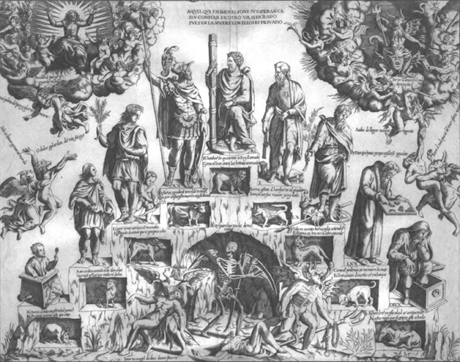
Fig. 1 Christofano Bertelli, The Man's Steps of Life, 1560, engraving, 393×510 mm, London, The British Museum © Trustees of the British Museum.
| |||||||
Mars and Venus as the Ideal Man and WomanAnthonie Palamedes' guardroom scenes are staged indoors and are enacted by members of the Dutch middle-class. In this manner, they touch upon issues concerned with the ethos of seventeenth-century Dutch society at large. It is useful, therefore to shift our gaze momentarily towards one of the most popular visual forms for dealing with the question of the ideal man and woman in seventeenth-century Holland. This popular formula was called The Steps of Life [De Levenstrap].Ga naar voetnoot8 It depicted man's progress through life as the ascent, from his birth, of a staircase-like podium. He reaches his prime in his | |||||||
[pagina 185]
| |||||||
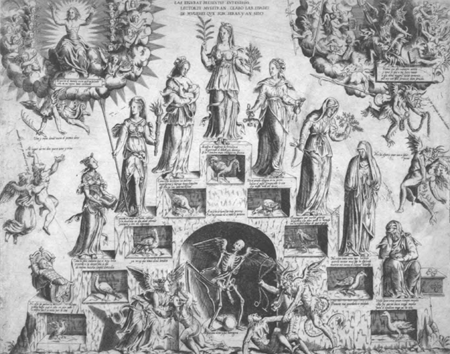
Fig. 2 Christofano Bertelli, The Woman's Steps of Life, 1560, engraving, 393×510 mm, London, The British Museum © Trustees of the British Museum.
fifties and then descends the stairs towards his death. In most versions in circulation in seventeenth-century Holland, a man in his forties is presented as an armed warrior (fig. 1). The warrior in Bertelli's print, wearing a suit of armour, a helmet, and holding a halberd, creates a clear association with the god of war Mars.Ga naar voetnoot9 Many of these prints have pendants depicting the desirable course of woman's life; the equivalent step in many of these depicts the woman as a nursing mother (fig. 2). Therefore, the woman is associated with Venus, the goddess of love and fertility, and through her with the Madonna and the image of Caritas. Clearly, in the eyes of the seventeenth-century Dutch, the ideal man is a warrior before he reaches his prime, while his ideal match is a young nursing mother. The juxtaposition of warrior and young mother obviously has to do with certain representations of Mars and Venus known to seventeenth-century Dutch painters from prints such as the one by Jacopo de' Barbari (fig. 3).Ga naar voetnoot10 In this print, we again see a man | |||||||
[pagina 186]
| |||||||
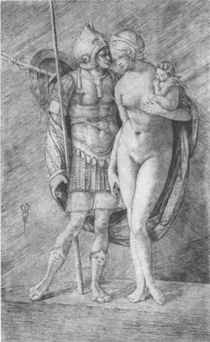
Fig. 3 Jacopo de' Barbari, Mars and Venus, c. 1495, engraving, 288×179 mm, London, The British Museum © Trustees of the British Museum.
wearing armour and holding a halberd, who stands next to a woman with a baby in her arms. This mythological subject, depicted as the meeting of lovers, was traditionally accepted as signifying the personification of aggression tamed by love. Jacopo de' Barbari's version emphasises Venus' role as a mother. | |||||||
War and Peace in the Art of Peter Paul RubensNo one in the seventeenth century used the figures of Mars and Venus to present the contradiction between war and peace more emphatically and intensively than Peter Paul Rubens.Ga naar voetnoot11 In his Minerva Protects Pax from Mars (fig. 4), Venus appears as a personification of Peace (Pax) while she is nursing Pluto, the god of wealth.Ga naar voetnoot12 She is protected by Minerva, who personifies reason, fending off Mars, that is, war. In the lesser known version of this subject, The Triumph of Peace from Munich,Ga naar voetnoot13 the naked Venus at the centre of the composition is nursing a baby, while behind her Minerva pushes Mars away.Ga naar voetnoot14 The Triumph of Peace is characterised by a tangible division between left and right: on the left prosperity is symbolised by fruits and children, while on the right destruction is symbolised by a broken column and a burning city. Motherhood surrounded by the fruits of love represents the highest form of Peace. In her analysis of Minerva Protects Pax from Mars, Lisa Rosenthal defined it as ‘a distinctly feminized world of peace’ strange to men, let alone male warriors.Ga naar voetnoot15 Using | |||||||
[pagina 187]
| |||||||
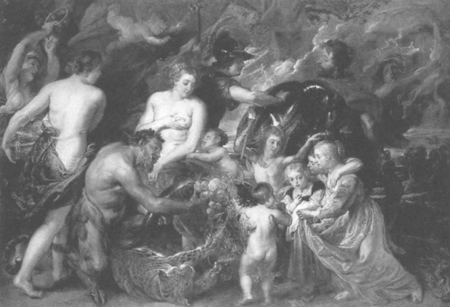
Fig. 4 P.P. Rubens, Minerva Protects Pax from Mars (‘Peace and War’), c. 1629-30, oil on canvas, 203.5×298 cm, London, The National Gallery © The National Gallery, London.
several examples, Rosenthal demonstrates that Rubens systematically used women in the role of mothers in a familial setting as opposed to men in the role of warriors, in order to present the contradiction between the benefits of peace and the drawbacks of war. She makes it clear that in these representations, feminine peace is mostly represented by mothers nursing babies. It gains the upper hand over masculine war, represented by tamed and domesticated men. She also shows that these allegories of peace and war not only address the issue of masculine and feminine roles at home, but reflect on their roles in society and state at large.Ga naar voetnoot16 Venus takes a more active role as a pacifier in Rubens' The Return from War: Mars Disarmed by Venus, which was painted in collaboration with Jan Brueghel (fig. 5). Here, Venus and a group of five cupids disarm Mars in the middle of an old castle hall. The nude feminine Venus is in sharp contrast to the masculine and rough Mars, who is fully encased in armour and wears a helmet, resting the weight of his body on a commander's staff. This contrast is intensified by the various weapons and military equipment which fill the space and by the soldiers in the background who are going about their everyday chores. | |||||||
[pagina 188]
| |||||||
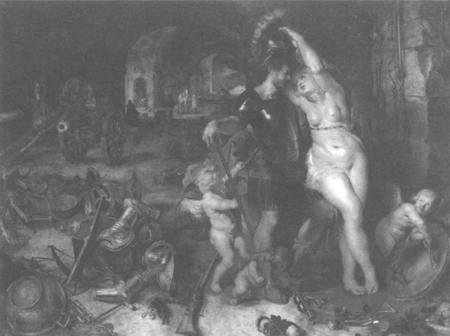
Fig. 5 P.P. Rubens and Jan Brueghel the Elder, The Return from War: Mars Disarmed by Venus, c. 1610-12, oil on panel, 127.3×163.5 cm, Los Angeles, The J. Paul Getty Museum.
The painting was originally designed to represent The Forge of Vulcan,Ga naar voetnoot17 but the changes made by Rubens and Breughel to the original plan in order to turn it into an allegory of peace made the interior look more like a guardroom. Details added in the last phases of this process of alterations, such as the bridles hanging on the right wall next to Venus, make a clear reference to the action taking place in front of us: the restraining of Mars by Venus and her children. Rubens is responsible for shifting the figure of the erotic and tempting Venus into an allegory of maternity and peace. By the mid-seventeenth century, therefore, women in the role of mothers were perceived as emblems of peace. This, in turn, applies to Dutch genre paintings of the second half of the seventeenth century too. | |||||||
Anthonie Palamedes and the Antwerp Art SceneAt this point it is useful to establish the link between Anthonie Palamedes and the artistic scene of contemporary Antwerp. Palamedes' father, the lapidarist Palamedes Ste- | |||||||
[pagina 189]
| |||||||
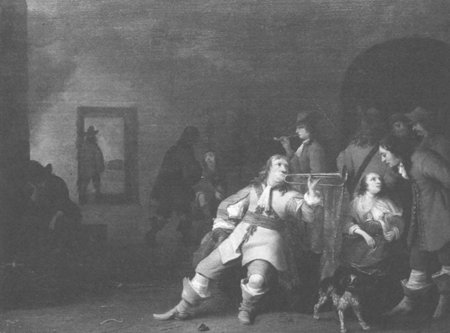
Fig. 6 Anthonie Palamedes, A Guardroom Scene with a Trumpeter, 1654, oil on panel, 36.4×50 cm, Warsaw, The Royal Lazienki Museum, Poland.
vensz., had immigrated from Flanders to Delft; and it is conceivable that the family had maintained some ties to the region.This assumption is substantiated by the travels of another family member: among the students trained by Anthonie Palamedes was his younger brother Palamedes Palamedesz. (1607-1638). The two brothers shared an interest in genre themes dealing with war and peace. While Anthonie Palamedes occasionally painted guardroom scenes, his brother became renowned for his battle and military camp scenes. Palamedes Palamedesz. traveled to Antwerp in 1631 and returned to Delft a year later. It is not too farfetched to assume that upon his return, the younger brother shared with the elder his impressions of artistic developments in Antwerp, and particularly those they were both interested in. Therefore, it was probably Palamedes Palamedesz. who introduced the visual ideas of Rubens on war and peace to Anthonie Palamedes.Ga naar voetnoot18 One cannot miss the similarity between the interior used by Rubens, a ruin with an opening in the middle background, and some guardroom scenes by Anthonie Palamedes (see fig. 7). It is to these guardroom scenes by Palamedes that we now turn. | |||||||
[pagina 190]
| |||||||
Mothers in the Guardroom Scenes ofAnthonie PalamedesTrue, some guardroom scenes by Palamedes do not include women at all, and others have women in their more conventional role in this context, such as barmaids and camp-followers. Still, many of his guardroom scene are unique in that they show respectable urban middle-class women in the role of mothers. One such example is A Guardroom Scene with a Trumpeter (1654) from Warsaw (fig. 6). This scene is dominated by a military man seated in the middle foreground, blowing a trumpet. Immediately next to him sits a young woman nursing a baby and talking to another man. He is leaning over and seems not only to be talking to her, but more particularly to be scrutinising what she is doing. A ready dog stands at her feet looking at the viewer, while other soldiers go about their business at the back.The painting reveals a high level of civility.This nursing mother is no camp-follower but the legitimate partner of one of the men. The painting presents a meeting of two worlds: it is a guardroom occupied by soldiers who are perhaps mustered for duty by the trumpeter. But on the other hand, we find a relaxed woman caring for her child while chatting with a man. The dog in the foreground and the mussel-shell on the floor remind us of countless seventeenth-century Dutch domestic scenes. As numerous seventeenth-century Dutch poems and paintings reflect, nursing was associated with domesticity.The image of the nursing mother in seventeenth-century Dutch genre paintings is based on the image of the Virgo lactans. As early as the fifteenth century Flemish painters placed the figure of the nursing Madonna in a simple domestic interior, and this image gradually became the image of domestic virtue.Ga naar voetnoot19 The Dutch nursing mother reflected her own values, but also represented domestic harmony. Moreover, she stood for Dutch society at large, serving as an emblem of good government.Ga naar voetnoot20 Breast-feeding was considered the most important of all maternal dutiesGa naar voetnoot21 and we know that this perception was fully realised, since most seventeenth-century Dutch women nursed their own babies.Ga naar voetnoot22 ‘A proper upbringing was supposed to begin with the mother's milk and to flourish within a carefully controlled environment distinguished by the homely virtues of modesty and affection (...) Parental duties were clearly sex-segregated: the father provided for his family by practicing his trade, the mother provided the very substance of her body.’Ga naar voetnoot23 This role division is reflected in many paintings and prints of the seventeenth century, where men are plying their trade in the company of their wives who are taking care of the children.Ga naar voetnoot24 This division and its wider implications for Dutch society is also present in this guardroom scene by Palamedes. | |||||||
[pagina 191]
| |||||||

Fig. 7 Anthonie Palamedes, A Guardroom Scene, 1648, oil on panel, 26×37 cm, Sammlungen des Fürsten von und zu Liechtenstein, Vaduz-Wien.
Anthonie Palamedes' guardroom scene at the Liechtenstein Museum of 1648 (fig. 7) is the earliest dated guardroom scene with a nursing, or for that matter any, middle-class mother. This guardroom is dominated by an authoritarian officer standing in the middle foreground. His importance is further emphasised by the page kneeling at his feet and attaching his spurs. To his left sits an elegant woman. She is nursing a baby, who in the process has dropped one of his slippers onto the floor. Behind the officer, a man is holding a pike, while in the left foreground a soldier leans towards a military drum and seems about to beat it. More soldiers are seen in the middle distance, and others in the back, through an open door. The pose of the officer, with the weight of his body resting on a staff and the interior with the opening in the background, recalls The Return from War: Mars Disarmed by Venus. The juxtaposition of the baby's slipper with a match suggests peaceful domesticity versus volatile martialism and reminds us of the similar division of symbols in Rubens' The Triumph of Peace. A guardroom scene by Palamedes in Leiden (fig. 8) also focuses on the figure of an elegant officer, standing. On the right foreground, and contrary to the activity in the rest of the painting, a woman sits and holds a baby in her arms. A boy stands next to her and one of the men is leaning over her shoulder and directs her attention to a dog standing on its rear legs. The woman and her children seem to be functioning in a world of their own: while the company enters the barracks, a temporary shelter having more to do with life outdoors, the woman and children maintain the ambience of home. The | |||||||
[pagina 192]
| |||||||
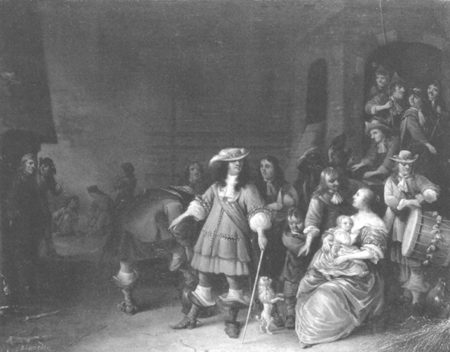
Fig. 8 Anthonie Palamedes, Guardroom Scene with Soldiers Descending a Staircase, oil on panel, 39.5×51.2 cm, Leiden, Stedelijk Museum De Lakenhal, The Netherlands.
officer seems to be functioning in the two different spheres at the same time: he is both a commander and a pater familias. The dog is of a type favoured by contemporary women and its posture is a visual analogue, common in seventeenth-century Dutch paintings, to the raising of children and is therefore associated with the domestic feminine sphere.Ga naar voetnoot25 The association of a child with a playful dog appears in another guardroom scene by Palamedes too (fig. 9). As in the examples mentioned above, this guardroom scene is dominated by an elegant officer accompanied by a pikeman. In the right foreground a woman is seated, holding a toddler by the hand and talking to one of the men. The cheerful looking dog seems to be trampling the child he is playing with. This motif seems also to be borrowed from the world of Mars and Venus, in this case a print after Paolo Veronese (fig. 10). | |||||||
[pagina 193]
| |||||||
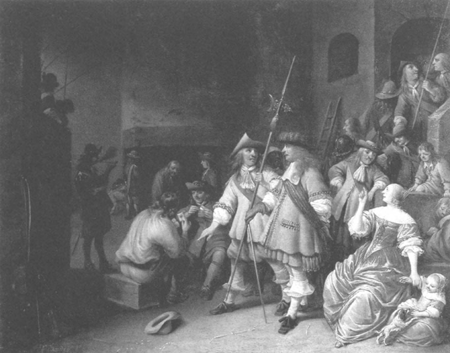
Fig. 9 Anthonie Palamedes, Guardroom Scene with a Woman and a Child Playing with a Dog, oil on panel, 41.5×53 cm, whereabouts unknown, Photo: Rijksbureau voor Kunsthistorische Documentatie (rkd), The Hague, The Netherlands.
| |||||||
ConclusionsThe guardroom scene was a very successful and sought-after genre formula. It was in high demand from the late 1620s till well into the 1660s. It pointed the way for all seventeenth-century interior scenes with soldiers. One of the striking features of all Dutch military genre themes is their domestic and private nature.Ga naar voetnoot26 The guardroom scene has a particularly domestic and intimate nature, due to its location in an interior, the activities it includes and its minute size.Ga naar voetnoot27 The development of the guardroom scene follows the general process of gentrification apparent in seventeenth-century painting, its essence being the gradual shift of attention from the masculine outdoors to the feminine indoors. | |||||||
[pagina 194]
| |||||||
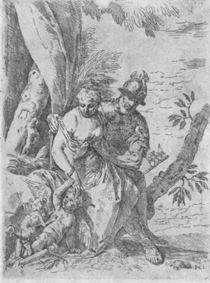
Fig. 10 Simone Cantarini after Paolo Veronese, Venus and Mars, before 1648, etching, 262×197 mm, London, The British Museum © Trustees of the British Museum.
Anthonie Palamedes was a very successful painter at his prime; he became rich and was greatly esteemed by his colleagues who nominated him repeatedly to be the head of their guild. His contribution to genre painting in Delft and elsewhere cannot be overemphasised. Palamedes' domesticated soldiers predate the highly credited soldier themes by Ter Borch. Kunzle, discussing The Gallant Soldier by Ter Borch, seems reluctant to define Palamedes as his predecessor.Ga naar voetnoot28 However, there can be no doubt that Palamedes' guardroom scenes from the 1640s (see fig. 7), presenting a middleclass nursing woman in an interior with soldiers, paved the way for Pieter De Hooch's and Ter Borch's seemingly civilised soldiers in middle-class interiors. It is probably no coincidence that both Kettering and Kunzle referred to the domesticated soldier in the paintings by Ter Borch as a disarmed and domesticated Mars.Ga naar voetnoot29 Mars and Venus furnished the seventeenth-century Dutch audience with models for an ideal man and woman, and the iconography of Mars and Venus in art had a tremendous effect on contemporary martial subject matter in general and the guardroom scene in particular. The guardroom scenes by Palamedes represent the way the masculine outdoors is pacified and tamed by feminine domestic motherhood. These apparently masculine paintings are, actually, an embodiment of masculinity pacified. This phenomenon is part of a broader process of the growing femininity and civility of seventeenth-century Dutch society as reflected in art.
Abstract - The guardroom scene was one of the most original and popular genre themes in Dutch Golden Age painting. One of its main practitioners was the Delft painter Anthonie Palamedes (1602-1673). The article shows that his guardroom scenes are unique, in that he paints women as mothers and not just in their conventional role of playful courtesans. In tracing the juxtaposition of ideal men and women in this era and then of Mars and Venus as personi- | |||||||
[pagina 195]
| |||||||
fications of War and Peace in contemporary art, the article establishes that Palamedes' guardroom scenes represent the way the masculine outdoors is pacified and tamed by feminine domestic motherhood. In other words, these apparently masculine paintings are actually an embodiment of masculinity pacified. This phenomenon, it is argued, is part of a broader process of growing femininity and civility in seventeenth-century Dutch society. |
|

